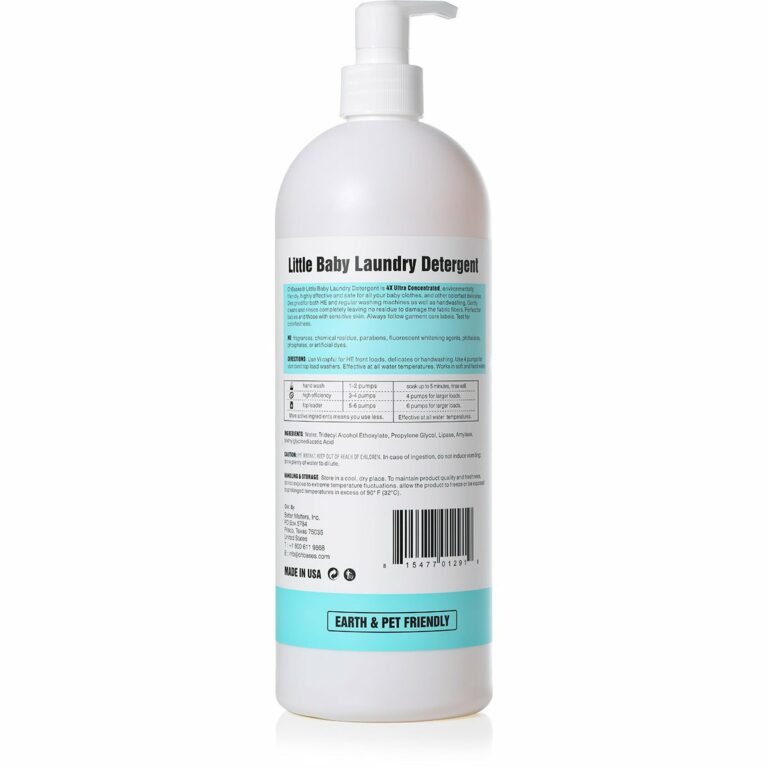Different Types of Bricks for Houses
Today we discuss Different Types of Bricks for Houses. The right choice of bricks can make all the difference. With different types of bricks for houses available in the market, it can be overwhelming to choose the right one. But fear not! In this blog article, we will guide you through the various types of bricks that are suitable for house construction. From traditional red bricks to modern architectural styles, we have got you covered. So, let’s dive in and explore the world of bricks for houses!
Different Types of Bricks for Houses:
Bricks have been used as a building material for thousands of years due to their durability, versatility, and aesthetic appeal. They are an essential element in the construction of houses, providing strength and stability to the structure.
However, not all bricks are created equal. There are various types of bricks available for building houses, each with its own unique characteristics and advantages. In this article, we will explore the different types of bricks commonly used in house construction and discuss their properties, applications, and benefits.
1. Common Bricks
Common bricks, also known as building bricks or clay bricks, are the most widely used type of bricks in house construction. They are made from clay that is shaped into a rectangular form and then fired in a kiln. Common bricks have a traditional red color and a relatively rough texture. Here are some key features of common bricks:
– Common bricks are affordable and readily available, making them a popular choice for house construction projects.
– They have good compressive strength, ensuring the structural stability of the building.
– Common bricks offer excellent thermal insulation properties, keeping the interior comfortable in both hot and cold climates.
– They have high fire resistance, providing safety and protection against fire hazards.
– Common bricks can be used for various applications, including load-bearing walls, partition walls, and foundations.
2. Facing Bricks
Facing bricks, also known as façade bricks or veneer bricks, are specifically designed to be used on the outer surface of a building. They are available in a range of colors, textures, and finishes, allowing homeowners to achieve their desired aesthetic appearance. Here are some key features of facing bricks:
– Facing bricks are manufactured with a focus on visual appeal, enhancing the overall look of the house.
– They are made from high-quality clay and undergo additional treatments during production to achieve the desired color and texture.
– Facing bricks offers good weather resistance, protecting the underlying structure from rain, wind, and other environmental elements.
– They require minimal maintenance and can withstand the effects of weathering for a long time.
– Facing bricks can be used for both load-bearing and non-load-bearing walls, adding beauty and charm to the exterior of the house.
3. Engineering Bricks
Engineering bricks, also known as class B bricks, are designed to provide superior strength and durability. They are commonly used in areas that require high structural integrity, such as below ground construction and areas prone to chemical attack. Here are some key features of engineering bricks:
– Engineering bricks are denser and stronger than common bricks, with a higher compressive strength.
– They have a smooth and dense surface, making them resistant to moisture penetration.
– Engineering bricks have excellent resistance to frost, chemicals, and abrasion, ensuring long-lasting performance.
– They are often used in the construction of sewers, manholes, retaining walls, and other heavy-duty applications.
– Engineering bricks are available in various colors, allowing for design flexibility even in areas where their strength properties are not required.
4. Concrete Bricks
Concrete bricks, also known as cement bricks, are made from a mixture of cement, sand, and aggregates. They provide strength and durability similar to engineering bricks but at a lower cost. Here are some key features of concrete bricks:
– Concrete bricks are versatile and can be manufactured in different shapes and sizes to meet specific design requirements.
– They have a smooth surface and sharp edges, giving a modern and clean look to the building.
– Concrete bricks offer good thermal insulation properties and can help regulate indoor temperature.
– They have high load-bearing capacity, making them suitable for both structural and non-structural applications.
– Concrete bricks are commonly used for walls, paving, and landscaping elements in residential construction.
5. Fly Ash Bricks
Fly ash bricks are a type of lightweight bricks made from a combination of fly ash, cement, sand, and water. They are known for their eco-friendly and cost-effective nature. Here are some key features of fly ash bricks:
– Fly ash bricks are lightweight, which makes them easier to handle during construction.
– They have excellent thermal insulation properties, reducing the need for additional insulation materials.
– Fly ash bricks are energy-efficient, as they require less energy during the manufacturing process.
– They are environmentally friendly, as they utilize waste fly ash generated from coal-fired power plants.
– Fly ash bricks are suitable for both load-bearing and non-load-bearing walls and can be used in various construction projects.
6. Porotherm Bricks
Porotherm bricks, also known as clay hollow bricks, are a modern innovation in brick technology. They are made from clay reinforced with vertical holes, providing enhanced thermal insulation and load-bearing capacity. Here are some key features of porotherm bricks:
– Porotherm bricks offer excellent thermal insulation properties, reducing heat transfer and maintaining a comfortable indoor temperature.
– They have high load-bearing capacity, allowing for the construction of taller and stronger walls.
– Porotherm bricks are lightweight, making them easier to handle and reducing transportation costs.
– They have excellent acoustic insulation, minimizing sound transmission between rooms and enhancing overall comfort.
– Porotherm bricks are suitable for both load-bearing and partition walls, providing a sustainable and energy-efficient solution.
7. Sand Lime Bricks
Sand lime bricks, also known as calcium silicate bricks, are made from a mixture of sand, lime, and water. They offer a unique combination of strength, durability, and fire resistance. Here are some key features of sand lime bricks:
– Sand lime bricks have high compressive strength, ensuring structural stability and longevity.
– They offer excellent fire resistance, making them suitable for areas where fire safety is a concern.
– Sand lime bricks have good weather resistance and can withstand the effects of freeze-thaw cycles.
– They provide good thermal insulation properties, contributing to energy efficiency and reduced heating or cooling costs.
– Sand lime bricks are used in various applications, including load-bearing walls, partitions, and facades.
8. Glass Bricks
Glass bricks, also known as glass blocks, are unique building materials that allow natural light to penetrate while providing privacy and visual appeal. They are made from glass and can be transparent, translucent, or patterned. Here are some key features of glass bricks:
– Glass bricks are aesthetically pleasing and add a touch of modernity to the building design.
– They allow natural light to enter the interior space, reducing the need for artificial lighting during the day.
– Glass bricks provide thermal insulation properties, helping to regulate indoor temperature.
– They offer privacy while still maintaining the feeling of openness and spaciousness.
– Glass bricks are commonly used in areas where a combination of light, privacy, and design is desired, such as bathrooms, stairwells, and interior walls.
9. Fire Bricks
Fire bricks, also known as refractory bricks, are specially designed to withstand high temperatures without losing their structural integrity. They are used in areas where heat is a concern, such as fireplaces, kilns, and furnaces. Here are some key features of fire bricks:
– Fire bricks have excellent thermal insulation properties, protecting the surrounding areas from extreme heat.
– They have high resistance to thermal shock, preventing cracks and damage under rapid temperature changes.
– Fire bricks are non-combustible and can withstand prolonged exposure to fire.
– They have low thermal conductivity, reducing heat transfer and energy loss.
– Fire bricks are available in different grades, depending on the maximum temperature they can withstand.
10. Estimating the Number of Bricks
Once you have chosen the type of bricks for your house construction, it is essential to estimate the required quantity accurately. Here are some factors to consider when estimating the number of bricks:
– Measure the dimensions of the walls and calculate the total surface area to be covered by bricks.
– Consider the type of bond or pattern you plan to use, as different patterns require different amounts of bricks.
– Determine the thickness of the mortar joints between bricks and include this in your calculations.
– Account for additional bricks required for cut pieces, corners, and wastage.
– Consult with a professional or use online calculators to ensure accurate brick estimation.
Info You Need to Know: Brick Types and Design – Adventures in Homebuilding
Faqs for Different Types of Bricks for Houses:
Clay bricks are made from natural clay and are known for their durability and thermal insulation properties. They are popular for house construction due to their ability to withstand extreme weather conditions and their aesthetic appeal.
Concrete bricks are made from a mixture of cement, sand, and aggregate, providing them with high compressive strength. They are more cost-effective and widely available compared to clay bricks. However, they may not offer the same level of thermal insulation as clay bricks.
Sand lime bricks are made by mixing sand, fly ash, and lime. They are known for their uniformity in size and shape, which makes them easier to lay. Sand lime bricks also have good load-bearing capacity and high resistance to moisture, making them suitable for house construction in damp areas.
Engineering bricks are highly durable and strong, often used in areas that require high strength and resistance to water absorption. They are commonly used in the construction of basements, retaining walls, and areas exposed to severe weather conditions.
Fly ash bricks are made from a mixture of fly ash, cement, sand, and water. They are lightweight, have good thermal insulation properties, and are eco-friendly since they utilize industrial waste. Fly ash bricks are suitable for both load-bearing and non-load-bearing walls in house construction.
Final Thoughts:
Different types of bricks for houses offer homeowners a range of options to choose from when constructing or renovating their homes. From traditional clay bricks to modern and eco-friendly alternatives like fly ash bricks and AAC blocks, each type has its unique properties and benefits. Clay bricks are versatile, durable, and provide excellent insulation, while fly ash bricks are cost-effective and environmentally friendly. AAC blocks, on the other hand, offer superior thermal insulation and are lightweight. Whether it’s aesthetics, strength, or sustainability, different types of bricks for houses cater to diverse needs, ensuring that homeowners can find the perfect fit for their projects.



